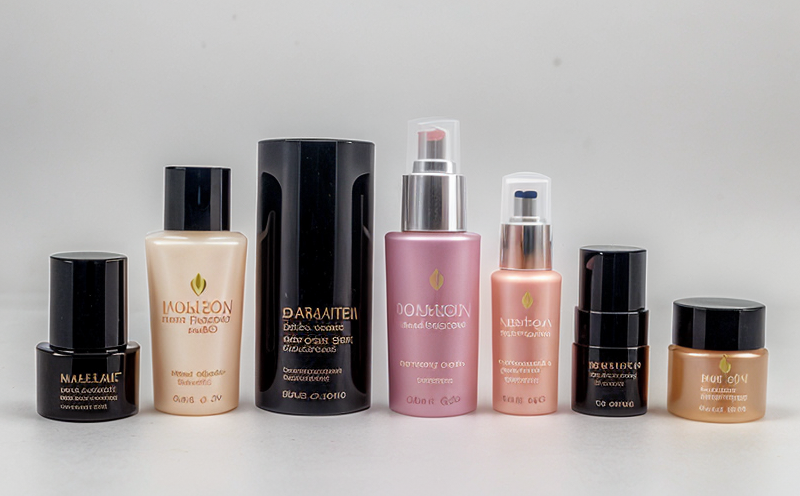Rubber Component Interaction Testing in Cosmetic Caps
In the realm of cosmetics and personal care products, ensuring the safety and quality of packaging is paramount. Rubber component interaction testing in cosmetic caps plays a crucial role in safeguarding consumers from potential health hazards associated with chemical migrations. This service ensures that rubber components used in cosmetic closures do not leach harmful substances into the product or come into contact with the skin.
The process involves rigorous laboratory analysis to assess how rubber components interact with various cosmetic formulations, including lotions, serums, and creams. The interaction test evaluates the migration of chemicals from the rubber component into the cosmetic contents over time. This testing is critical for compliance with international standards such as ISO 10993-22:2015 and EN 863:2014.
The service also encompasses the preparation of test specimens, which involves selecting representative samples of rubber caps along with their contact materials. The testing apparatus includes specialized equipment designed to simulate real-world conditions, such as temperature variations and storage durations typical in retail environments.
Once the tests are conducted, detailed reports are generated, outlining the results against specified acceptance criteria. These criteria ensure that any migration levels fall well below regulatory limits set by authorities like the European Commission's Cosmetic Regulation (EC 1223/2009).
This testing service is essential for quality managers and compliance officers who need to verify the safety of their product packaging components. It also benefits R&D engineers in identifying potential issues early in the design phase, thus preventing costly recalls down the line.
Applied Standards
| Standard | Description |
|---|---|
| ISO 10993-22:2015 | Biocompatibility evaluation of medical devices and materials used for pharmaceuticals. |
| EN 863:2014 | European standard for the safety of toys, including packaging components. |
| ASTM D471-15 | American Society for Testing and Materials standard detailing rubber testing methods. |
Customer Impact and Satisfaction
- Ensures consumer safety by minimizing the risk of chemical migration from packaging into cosmetics.
- Enhances brand reputation through compliance with stringent international standards.
- Reduces the likelihood of product recalls due to non-compliance issues.
The successful implementation of this testing service significantly boosts customer confidence, leading to higher satisfaction levels and increased loyalty towards brands that prioritize safety and quality.
Competitive Advantage and Market Impact
- Pioneers in rubber component interaction testing ensures early identification of potential risks, giving businesses a strategic edge over competitors.
- Compliance with international standards opens doors to global markets, particularly in regions with stringent regulations on cosmetic safety.
This service not only strengthens market positioning but also fosters innovation by enabling continuous improvement in product design and manufacturing processes. As a result, companies can enhance their competitive advantage and achieve greater market penetration.





